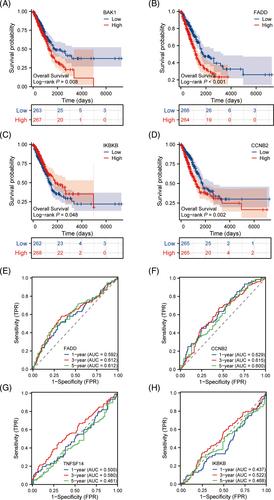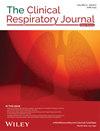Lung adenocarcinoma (LUAD) is one of the most invasive malignant tumor of the respiratory system. It is also the common pathological type leading to the death of LUAD. Maintaining the homeostasis of immune cells is an important way for anti-tumor immunotherapy. However, the biological significance of maintaining immune homeostasis and immune therapeutic effect has not been well studied.
We constructed a diagnostic and prognostic model for LUAD based on B and T cells homeostasis-related genes. Minimum absolute contraction and selection operator (LASSO) analysis and multivariate Cox regression are used to identify the prognostic gene signatures. Based on the overall survival time and survival status of LUAD patients, a 10-gene prognostic model composed of ABL1, BAK1, IKBKB, PPP2R3C, CCNB2, CORO1A, FADD, P2RX7, TNFSF14, and ZC3H8 was subsequently identified as prognostic markers from The Cancer Genome Atlas (TCGA)-LUAD to develop a prognostic signature. This study constructed a gene prognosis model based on gene expression profiles and corresponding survival information through survival analysis, as well as 1-year, 3-year, and 5-year ROC curve analysis. Enrichment analysis attempted to reveal the potential mechanism of action and molecular pathway of prognostic genes. The CIBERSORT algorithm calculated the infiltration degree of 22 immune cells in each sample and compared the difference of immune cell infiltration between high-risk group and low-risk group. At the cellular level, PCR and CKK8 experiments were used to verify the differences in the expression of the constructed 10-gene model and its effects on cell viability, respectively. The experimental results supported the significant biological significance and potential application value of the molecular model in the prognosis of lung cancer. Enrichment analyses showed that these genes were mainly related to lymphocyte homeostasis.
We identified a novel immune cell homeostasis prognostic signature. Targeting these immune cell homeostasis prognostic genes may be an alternative for LUAD treatment. The reliability of the prediction model was confirmed at bioinformatics level, cellular level, and gene level.



